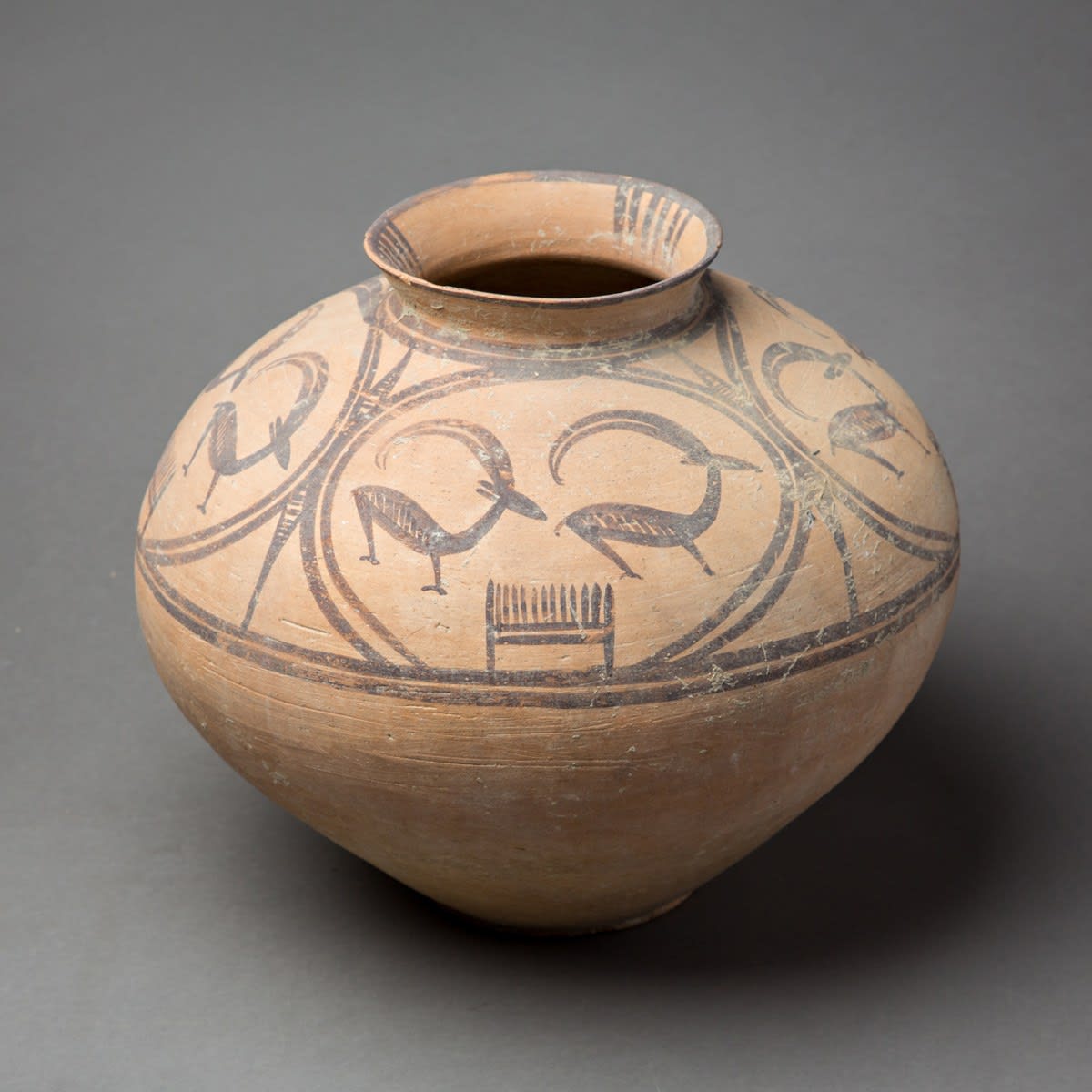Kulli people Slip-Painted Terracotta Jar, 2600 BC - 2000 BC
Terracotta, Pigment
height 24.8 cm
height 9 3/4 in
height 9 3/4 in
LO.600
Around 2600 BCE, most sites in northern and central Balochistan were abandoned, as a consequence of the expansion of the Indus Civilisation into their territory. Nevertheless, southern Baluchistan continued to...
Around 2600 BCE, most sites in northern and central Balochistan were abandoned, as a consequence of the expansion of the Indus Civilisation into their territory. Nevertheless, southern Baluchistan continued to be inhabited by an indigenous population labelled Kulli.
The Kulli culture was a prehistoric culture in southern Balochistan (Gedrosia) in Pakistan ca. 2500 BC - 2000 BC. The pottery and other artefacts are similar to those of the Indus Valley Civilization and it is not clear whether the Kulli culture is a local variation of the Indus Valley Civilization or a separate cultural complex. The culture is named after an archaeological site in Kolwa discovered by Sir Aurel Stein.
Agriculture was the economical base of the Kulli people. Near many Kulli culture sites dams were found, providing evidence for a highly developed water management system.
Ceramic vessels from the Kulli phase have been unearthed at Nindowari, Nausharo and other small sites in Baluchistan. Their surface is often painted with reddish-brown slip patterns, one of the most common being vertical strokes depicted on the neck, as in the globular jar here illustrated.
While this vessel would have been most probably used to carry water, it is also the creation of an artist with a trained eye. The form of the vase is elegant and refined. The upper half of the vessel has been decorated with painted motifs, including a number of ibexes with long curving horns encircled in double rings.
References: comparable works are to be found in G. Possehl (1986) Kulli: An Exploration of an Ancient Civilization in South Asia. Durham.
The Kulli culture was a prehistoric culture in southern Balochistan (Gedrosia) in Pakistan ca. 2500 BC - 2000 BC. The pottery and other artefacts are similar to those of the Indus Valley Civilization and it is not clear whether the Kulli culture is a local variation of the Indus Valley Civilization or a separate cultural complex. The culture is named after an archaeological site in Kolwa discovered by Sir Aurel Stein.
Agriculture was the economical base of the Kulli people. Near many Kulli culture sites dams were found, providing evidence for a highly developed water management system.
Ceramic vessels from the Kulli phase have been unearthed at Nindowari, Nausharo and other small sites in Baluchistan. Their surface is often painted with reddish-brown slip patterns, one of the most common being vertical strokes depicted on the neck, as in the globular jar here illustrated.
While this vessel would have been most probably used to carry water, it is also the creation of an artist with a trained eye. The form of the vase is elegant and refined. The upper half of the vessel has been decorated with painted motifs, including a number of ibexes with long curving horns encircled in double rings.
References: comparable works are to be found in G. Possehl (1986) Kulli: An Exploration of an Ancient Civilization in South Asia. Durham.



